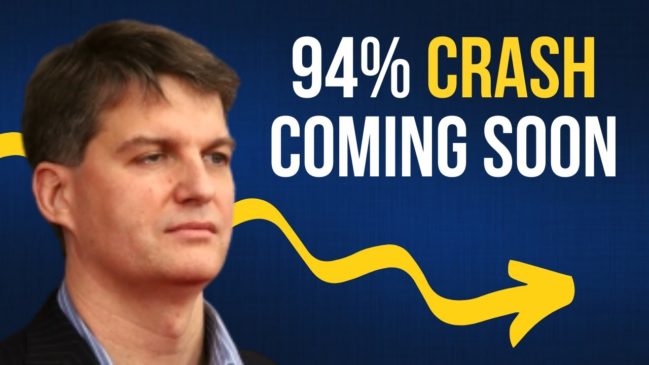▶ Coinbase Website: Coinbase.com
▶ CEX Website: cex.io
Interested in seeing my full portfolio with explanations along with buy and sell alerts? Join my research platform here:
Join Interactive Brokers here:
Casgains’s Recommended Investing/Business Books:
My Second Channel:
Twitter:
Instagram:
Contact for business inquiries only: casgainsacademy@gmail.com
Michael Burry predicted the dot-com bubble, the 2008 recession, and also paved the way for the rise of GameStop. With each short-term event, Burry made millions, and sometimes even billions. Michael Burry now believes that the biggest crash in US history is coming soon. And just like every other prediction, Burry is betting large amounts of money on it. If Burry’s prediction is correct, the stock and crypto market could fall as much as 95%. This video will go in-depth on why Burry is betting billions on an upcoming crash in the entire financial market.
When Michael Burry makes a bold prediction, you have to take him seriously. Unlike many other market crash predictors, Burry has hundreds of millions of dollars on the line and also has a phenomenal track record. From the year 2000 to the first quarter of 2008, Burry generated massive amounts of money for his investors, as he averaged a return of 28.6% per year. And if you thought Burry was a one-time wonder, that’s simply not the case. Since the beginning of 2016, his new fund, Scion Asset Management, has averaged a return of 22.8% per year. These numbers are outstanding, especially for his investing track record of 14 years. Given this information, it’s important that you at least see what Burry has to say, even if you have any preconceived notions. Large institutions and powerful government leaders do not want you to see what I’m about to show you. In fact, shortly after the SEC visited Michael Burry, his Twitter account was mysteriously deleted. This led me to search through immense amounts of deleted tweets to reveal Burry’s most unprecedented warning ever.
Michael Burry isn’t just predicting a stock market crash. He is predicting the collapse of America. Burry believes that this impending collapse will affect almost every asset, including cryptocurrencies, gold, stocks, real estate, bonds, and much more. But before we get into why Burry thinks every asset class will collapse, we must address the elephant in the room: inflation. Almost everything in Burry’s massive bet ties down to upcoming inflation in the US dollar. In Burry’s own words, “The US government is inviting inflation with its MMT-tinged policies. Brisk Debt/GDP, M2 increases while retail sales, PMI stage V recovery. Trillions more stimulus & reopening to boost demand as employee and supply chain costs skyrocket. #ParadigmShift.”
Burry’s whole argument centers around the devastating effects of the modern monetary theory, or MMT in short form. MMT is a macroeconomic theory that claims that governments should borrow or print money until their economy reaches full employment. In other words, the theory states that in a recession, governments should increase their currency’s money supply until the unemployment rate reaches normal levels. The theory goes on to claim that governments should only worry about inflation after full employment is reached. MMT is being used today by the Federal Reserve, but there are some major concerns about the concept. First of all, US debt as a percentage of GDP is currently reaching all-time highs. Additionally, M2 money, which is a tracker for the total money supply, has reached all-time highs. All of this money printing and borrowing is occurring while businesses are already recovering. We can see this in the US Purchasing Managers’ Index, or PMI in short form. The PMI is an index that tracks whether or not businesses are in good condition. Over the past few months, the PMI has exceeded pre-pandemic highs. As a result of this, many people are wondering why the US government is still printing more money. Consumer prices are already increasing all over the board as supply chains are failing to meet demand. Michael Burry believes this situation is very similar to how the German mark experienced hyperinflation in the early 1920s. Burry quoted an article that said, “Prices in Germany were steady, and both business and the stock market were booming. The exchange rate of the mark against the dollar and other currencies actually rose for a time, and the mark was momentarily the strongest currency in the world” on inflation’s eve.
▶ Coinbase Website: Coinbase.com
▶ CEX Website: cex.io
Youtube version




